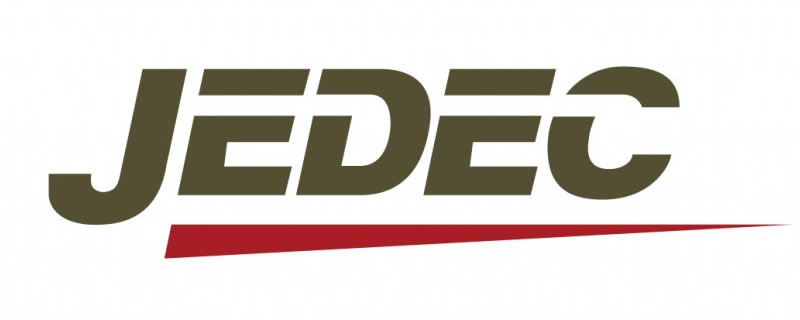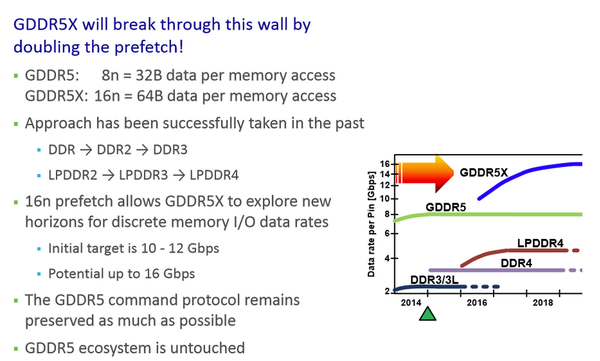JEDEC publishes their GDDR5X graphics memory standard
JEDEC publishes their GDDR5X graphics memory standard
Â
The JEDEC Solid State Technology Association has just published their new GDDR5X graphics memory standard, offering a large increase in memory speed/bandwidth (double that of GDDR5).Â
From what we know about GDDR5X memory we know that it has a very similar memory architecture to currently available GDDR5, with the main change being that the memory has double the pre-fetch from 8 data words per memory access to 16 data words per data access, in theory giving the memory double the theoretical bandwidth while maintaining an architecture that is nigh identical to GDDR5.
This means that GDDR5X will be very easy to transition to from GDDR5, meaning that it should be adopted very quickly by both AMD and Nvidia for upcoming GPUs, offering an increase in memory bandwidth without increasing overall GPU complexity.Â
Â
   “GDDR5X represents a significant leap forward for high end GPU design,” said Mian Quddus, JEDEC Board of Directors Chairman. “Its performance improvements over the prior standard will help enable the next generation of graphics and other high-performance applications.”
Â
So far in the first generation of this memory Micron has increased the memory data rates of GDDR5 from 8Gbps to between 10-12Gbps with GDDR5X, with future iterations hoping to surpass 14Gbps mark or even reach its theoretical maximum of 16Gbps. Â
Micron expects GDDR5X to be able to hit the market in the second half of 2016, just in time for a new generation of GPUs. With supply of HBM and HBM 2.0 memory being very constrained it is likely that some next generation GPUs will need to run on GDDR5 memory, though with the availability of GDDR5X GPUs can still use GDDR memory and not have as large of a bandwidth disadvantage when compared to HBM.Â
When compared to GDDR5X, HBM and HBM 2.0 still has significant advantages, as it consumes less power, reduces the required PCB space for a GPU and HBM 2 offers a significantly higher amount of bandwidth than GDDR5X.
Â
You can join the discussion on GDDR5X memory on the OC3D Forums.Â
Â
JEDEC has now published their GDDR5X graphics memory standard. https://t.co/FMVBeMrqPW pic.twitter.com/WgEXRhyY0A
— OC3D (@OC3D) January 22, 2016




